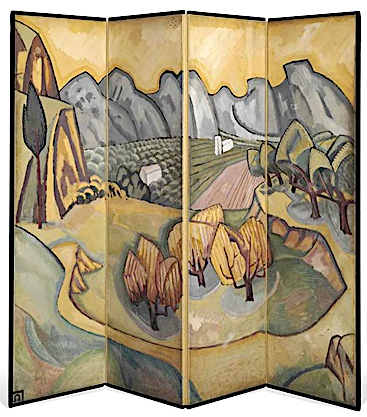Le Bec de l'Aigle (155m)
France (Provence Alpes Côte d'Azur)
In Le Bec de L'aigle - La Ciotat, huile sur toile, The Courtauld Institute, London
Le Cap
Le Bec de l'Aigle est un sommet situé en Provence, au-dessus de La Ciotat, à l'extrémité méridionale des falaises Soubeyranes. Il forme un cap, appelé cap de l'Aigle, délimitant l'extrémité occidentale de la baie de la Ciotat, culminant à 155 mètres d'altitude et qui se prolonge en mer par l'île Verte. L’éperon minéral s’élance vers la Méditerranée et exhibe une roche brune à gros galets que les géologues appellent « poudingue ». Cette roche s’est formée il y a environ 90 millions d’années. Elle témoigne d’un continent disparu, lointain cousin de la Corse et de la Sardaigne. À cette période reculée, la région de La Ciotat se situe sur les bords d’un continent faisant face à la Provence et a priori solidaire de la Corse et de la Sardaigne. Ce continent s’érodait et les sables, graviers et galets transportés par les fleuves, se sont accumulés dans des deltas au pied de cette terre émergée. L’un d’eux constitue aujourd’hui le poudingue du Bec de l’Aigle. La disparition de cette « Atlantide » séparée de la Provence par une petite mer intérieure, est liée à la naissance de la mer Méditerranée qui découle de la rotation dans le sens inverse des aiguilles d’une montre de la Corse. Le poudingue est ici un assemblage de galets arrondis composés de quartz, de grès, de schiste, de granite ou de calcaire, le tout cimenté naturellement.Le poudingue est ici un assemblage de galets arrondis composés de quartz, de grès, de schiste, de granite ou de calcaire, le tout cimenté naturellement.
Situé en bordure de ville, le parc du Mugel et le chantier naval de La Ciotat se trouvent à ses pieds.
Le peintre
Roger Eliot Fry est un critique et théoricien de l'art britannique, particulièrement actif dans les premières décennies du 20eiècle. Également peintre, il appartenait au Bloomsbury Group.L'historien de l'art Kenneth Clark voyait en lui le successeur de John Ruskin ; Virginia Woolf publia sa biographie en 1940. Il publie ses premiers articles dans des revues relativement confidentielles comme The Dome. Dans les années 1900, Roger Fry commence à enseigner l'histoire de l'art à la Slade School of Fine Art de University College à Londres. Il collabore à l’Athenaeum à partir de 1901 et participe en 1903 à la fondation du Burlington Magazine avec Bernard Berenson et Herbert Horne.
De 1906 à 1910, il passe quatre ans aux États-Unis, où il travaille au Metropolitan Museum of Art de New York comme conservateur du département des peintures. C'est lors de ce séjour qu'il découvre l'œuvre de Cézanne et se désintéresse peu à peu des primitifs italiens, au profit des peintres français de la fin du 19e siècle. De retour en Angleterre, il organise aux Grafton Galleries de Londres, en 1910, une exposition Manet et les postimpressionnistes, terme dont il est l'auteur. Celle-ci exerce une influence considérable sur le goût du public, tout en étant fraîchement accueillie par la critique. Fry organise alors, en 1912, une seconde exposition d'art post-impressionniste. Il reçoit le soutien financier de Lady Ottoline Morrell, avec qui il a une liaison éphémère.
En 1913, il fonde avec Vanessa Bell et Duncan Grant les Omega Workshops, un atelier d'art et d'artisanat situé à Fitzroy Square (Londres).
Deux de ses essais, Vision and Design (1920) et Transformations (1926), contribuent également à faire découvrir la peinture française contemporaine.
En 1932, Roger Fry apporte son soutien à l'Institut Courtauld de Londres pour en faire le premier centre britannique d'étude de l'histoire de l'art.
En 1933, il occupe la chaire Slade pour l'enseignement des beaux-arts à l'université de Cambridge, poste qu'il avait vivement souhaité.
_________________________________________________________
2024 - 13e année de publication - Gravir les montagnes en peinture
Un blog de Francis Rousseau



